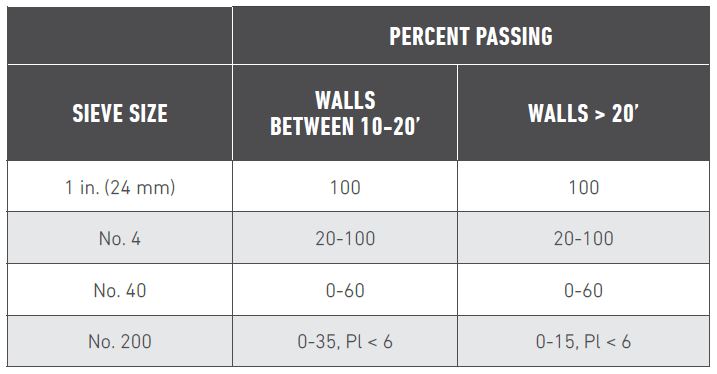Belgard Segmental Retaining Wall Best Practices
The National Concrete Masonry Association (NCMA), the trade organization representing masonry and segmental retaining wall (SRW) producers and affiliates, has developed a SRW Best Practices Guide.
The Guide provides educational materials in support of NCMA’s Zero Wall Failures Initiative. This initiative is “an industry-wide program to educate owners, designers, site civil engineers, geotechnical engineers, and installers of SRW systems on the industry’s recommended best practices and to promote a philosophy that strives for ensuring successful wall performance.”
Using the Guide will help reduce poor retaining wall performance in addition to reducing liability of the involved design professionals by presenting information and guidelines regarding standards of practice. Some key suggestions from the Guide include:
- Follow provided guidelines for optimum project organization that define roles and responsibilities for the various parties involved in retaining wall design and construction.
- Retaining wall design should be done during the design phase of the project by a design professional working directly for the project owner or owner’s representative and not be procured by the retaining wall contractor during the construction phase.
- Global and Compound Stability must be evaluated.
- The SRW components consisting of the face unit, soil reinforcement, and soil, must meet basic industry standards.
- Taller walls require special considerations including tighter standards for the reinforced soil.
Planning Considerations
The SRW design should be performed during the design phase of the project with the SRW designer as part of the design team. At the onset of the project, the SRW design engineer and site civil engineer should meet with the property owner to understand how the site will be used, project timeline and aesthetic objectives. Everyone on the team should also have an understanding of any special considerations, including local codes or ordinances, unusual site conditions and project relation to existing structures or utilities.
Other issues that will impact design include existing site drainage and topography, surface water, soil characteristics, property lines, and proposed locations of structures, roads and utilities. The owner or site civil engineer should contract with a geotechnical engineer to obtain a report on soil characteristics, groundwater conditions, applicable seismic coefficients and applicable foundation remediation needs. Site access constraints may also exist that will impact construction or staging and should be discussed in the planning phase.
Choosing SRW Units
The full evaluation of geosynthetic reinforcement materials is very important, yet very complex. Fortunately, a third-party review system is already in place to verify the strength properties and QC standards of reinforcement materials through the National Transportation Product Evaluation Program (NTPEP). Therefore, a best practice is to only use geosynthetic reinforcements with a current NTPEP report.
Building Tall Walls
Walls in excess of 10 feet require better soils, more rigorous attention to quality control, closer scrutiny to potential settlement, greater attention to compaction efforts during construction and careful attention to detailing. Project designer professionals must pay careful attention to site conditions well beyond the location of the SRW system.
In addition, layout considerations, such as the wall batter and geosynthetic reinforcement lengths, become more significant. Other considerations include site geometry, existing or new structures above or below the wall, property boundaries and the extent of required excavation.
Reinforced Fill Gradation For Tall Walls


